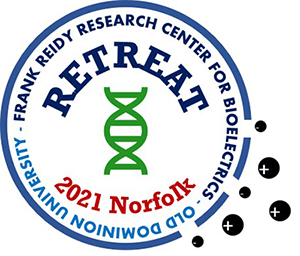Synergistic Effect of Nanopulse and Cold Plasma in Pancreatic Cancer
Document Type
Presentation
Publication Date
11-11-2021
Speaker Biographical Sketch

Zobia Minhas has an MS in Microbiology from Quaid e Azam University Islamabad, Pakistan. She did an internship at EVMS on HIV infection of macrophages and cocaine-induced microglial response using animal models and an internship at ODU on pancreatic cancer cells.
Category
Young Investigator
Session
Bioengineering
Format
Recorded
DOI
10.25776/69nb-xa02
Conference Name
2021 Frank Reidy Research Center for Bioelectrics Retreat
Abstract
Pancreatic adenocarcinoma is a highly aggressive malignancy with disease-related mortality almost equaling its incidence. The notorious resistance of pancreatic cancer not only to conventional cytotoxic therapies but also to almost all targeted agents developed to date continues to puzzle the oncological community and represents one of the biggest hurdles to reduce the death toll from this ominous disease. Currently, we have been focusing on developing nanosecond electric pulse or nano-pulse (NP) technology for cancer therapy. However, due to the demand for high electric fields, all currently available designs of NP delivery systems are only able to treat tumors with small sizes (4-7 mm). To solve this problem, we propose a combination of NP with non-thermal plasma or cold plasma (CP) to treat large tumors.
Our hypothesis is that the synergistic effect between NP and CP-produced reactive plasma species can be utilized to treat large tumors with sizes relevant to human cancer. First, the dose-dependent cytotoxicity of NP or CP to Pan02 pancreatic cancer cells was examined by cells treated with different doses of NP or CP. Second, we selected one specific dose of NP for further combination evaluation. The combination treatment was carried out either by treating cells with NP first then CP, or CP first then NP. The synergistic effect was assessed with cell viability and impedance measurement. Our results showed that NP at a very low dose can sensitize cancer cells that will then be killed by CP.
Our future goals are to develop a prototype engineering system for both NP and CP delivery to tumor tissue, to evaluate the synergistic effect of NP and CP in vitro and in vivo, and to explore the potential molecular mechanisms of the synergistic effect of NP and CP.
Repository Citation
Minhas, Zobia; Oshin, Edwin Ayobami; Colunga Biancatelli, Ruben; Jiang, Chunqi; and Guo, Sigi, "Synergistic Effect of Nanopulse and Cold Plasma in Pancreatic Cancer" (2021). 2021 Frank Reidy Research Center for Bioelectrics Retreat. 5.
https://digitalcommons.odu.edu/bioelectrics-2021retreat/5
ORCID
0000-0002-2932-9470 (Oshin); 0000-0002-1174-3876 (Colunga Biancatelli); 0000-0002-7280-7888 (Guo)


